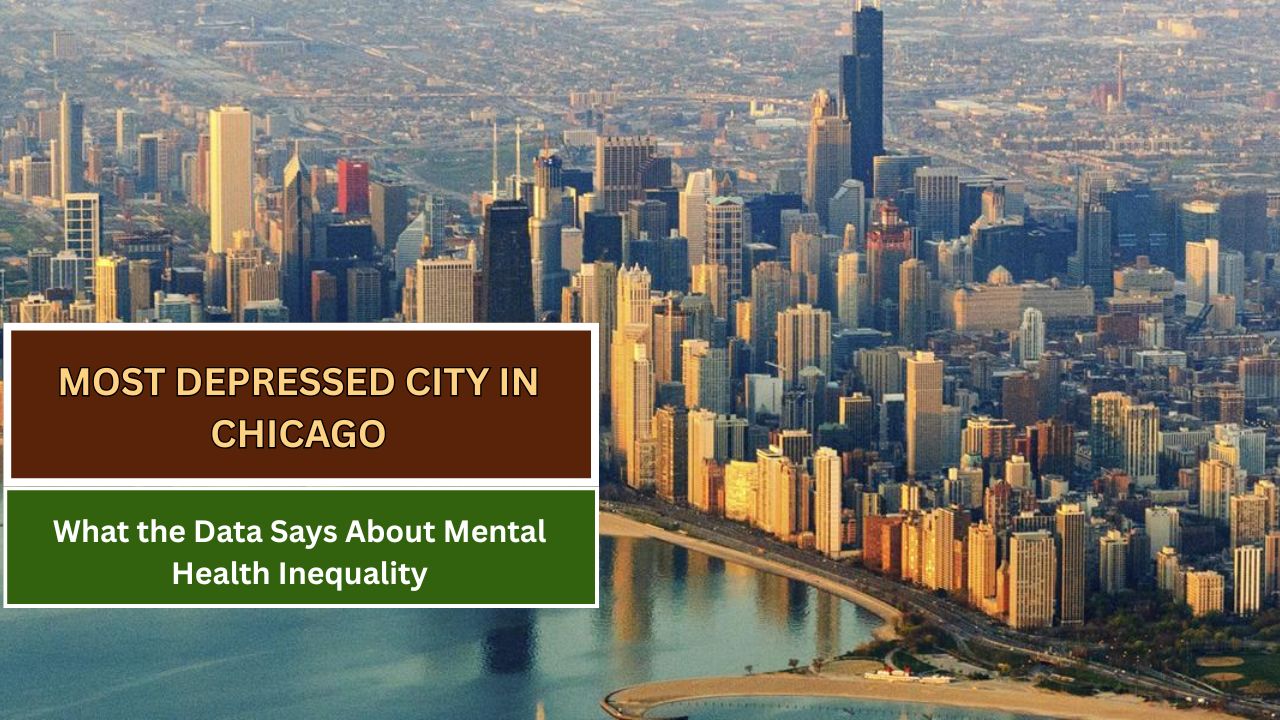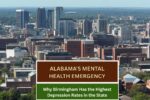Chicago is often portrayed as a city of vibrant culture and architectural beauty—but behind this image lies a troubling reality for many of its residents. In some neighborhoods, particularly those on the South and West Sides, rates of depression and mental distress are disproportionately high. A combination of poverty, unemployment, crime, and disinvestment appears to be fueling a mental health crisis in parts of the city.
Fuller Park: Ground Zero for Mental Health Disparities
One of the hardest-hit neighborhoods is Fuller Park, located on the South Side. According to the City of Chicago’s own hardship index, Fuller Park consistently ranks as one of the most economically challenged communities. In a 2013 report, it had the highest hardship score among all 77 community areas.
This small neighborhood faces staggering socioeconomic challenges:
- Unemployment rate: 40%
- Poverty rate: Over 50% of households
- Crime: Highest in the city per capita
- Per capita income: Among the lowest in Chicago
Each of these metrics is closely tied to negative mental health outcomes, including anxiety, depression, and trauma-related disorders.
Englewood and West Englewood: Struggles Across Generations
Adjacent to Fuller Park are Englewood and West Englewood, both long marked by urban decay and systemic neglect. These neighborhoods were hit hard by the closure of schools, loss of industrial jobs, and the foreclosure crisis.
Between 2008 and 2012, Englewood had:
- A poverty rate of 46.6%
- An unemployment rate of 28% among adults over 16
In these neighborhoods, mental health services are limited, and stigma often prevents individuals from seeking help. The combination of daily survival stress and lack of support creates a feedback loop of untreated mental health conditions.
You can view public health data for these neighborhoods on the Chicago Health Atlas.
West Garfield Park and Austin: Fear and Isolation
On the West Side, West Garfield Park and Austin exhibit similar mental health risk factors. A 2022 report from the Illinois Criminal Justice Information Authority (ICJIA), titled An Examination of Fear of Crime and Social Vulnerability in Chicago Neighborhoods, noted that:
- These areas scored high in social vulnerability
- Residents reported persistent fear of crime, even within their own homes
- Such chronic stress is a known contributor to clinical depression and PTSD
Fear, combined with socioeconomic instability, often leads residents to isolate themselves, further exacerbating mental health issues.
Is Depression Lower in Big Cities? The Contradiction
Interestingly, a University of Chicago study found that large cities like Chicago tend to have lower average rates of depression than smaller towns, due to increased opportunities for social interaction and economic mobility.
However, this citywide average hides stark inequalities between affluent and disadvantaged neighborhoods. For communities like Fuller Park and Englewood, the protective factors associated with urban living are nullified by structural disadvantages and lack of access to care.
What Can Be Done?
Mental health advocates and policymakers are calling for a multifaceted approach to address the crisis:
- Expanding mental health clinics in underserved areas
- Increasing school-based mental health services
- Reinvestment in job training and housing stability programs
- Community trauma-informed policing and violence prevention initiatives
Governor J.B. Pritzker’s administration has also proposed increasing state mental health funding, which would support local programs in high-need areas.
Conclusion
While Chicago continues to invest in downtown revitalization and lakefront beautification, its most vulnerable neighborhoods remain in the shadows. Addressing depression in these areas is not only a public health priority—it’s a moral imperative. The data is clear: poverty, crime, and isolation don’t just affect safety and economics—they also deeply harm mental health.
To heal Chicago, the city must begin where the pain is deepest.
This article has been carefully fact-checked by our editorial team to ensure accuracy and eliminate any misleading information. We are committed to maintaining the highest standards of integrity in our content.

Outside of work, he enjoys playing chess, following cricket, and writing short stories. His commitment to integrity and in-depth analysis strengthens OTE News’ mission of providing trustworthy journalism.




